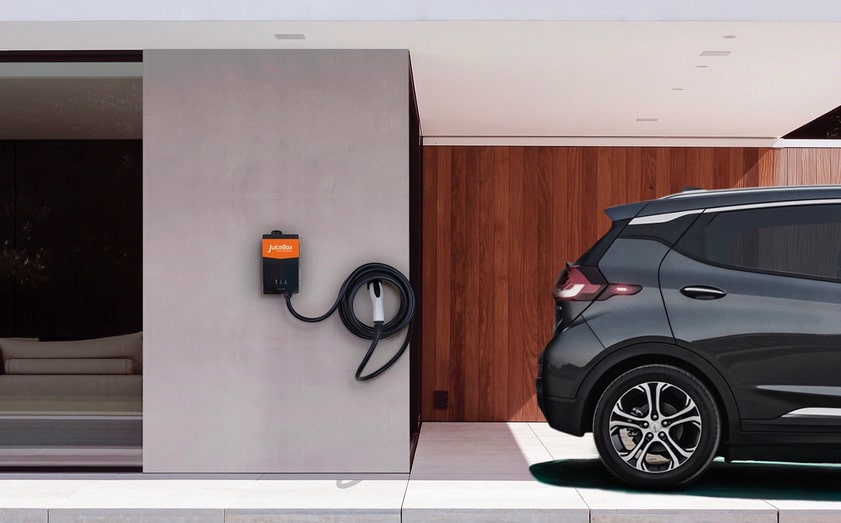Understanding the Different EV Charging Levels
Differences between Level 1, Level 2 and Level 3 Electric Vehicle Charging

Gasoline and diesel cars have been around for over 100 years, and the industry has developed a robust refueling infrastructure to support the billions of cars that have been produced and sold. However, with the recent rise in popularity of electric cars, new “refueling” routines are evolving behaviors. It’s important to understand the three different types of EV charging levels (Level 1, 2 and 3), their associated charge rates and the typical use cases of each when considering electric vehicle supply equipment (EVSE).
Level 1 Charging
The first EV charging level is the basic Level 1 charger. A Level 1 charger is simply charging from a standard 120V household outlet, which only provides about 4 to 5 miles of range per hour. Some people find that this is sufficient, as they do not drive very far every day, and can leave the car plugged in for many hours to replenish the energy used that day. Plug in hybrids have smaller battery packs than pure battery electric vehicles have and may be better candidates for Level 1 charging. It’s also worth noting that Level 1 charging is mostly restricted to North, Central & South America; Europe and much of the rest of the world uses a 220V electric supply for their plug-in electric vehicles.
Level 2 Charging
Our JuiceBox charging stations are Level 2 chargers, which essentially take in a voltage supply over 200 volts, and will charge a typical EV at a rate between 12 to 60 miles of range per hour, depending on how much power the charger can supply, and how much power the EV can accept. In the US, most homes use 240 volts for appliances like a washing machine and dryer, which is simply putting two 120V circuits together, or and most commercial properties use 208V, three phase power.
Check out our “EV Charging Times” table to see how charging varies across electric car models.
Level 3 Charging, most commonly known as “DC Fast Charging”
DC fast charging uses direct current (DC), which is different than the alternating current (AC) that is available in homes and most commercial buildings, and there is a rich history on the “war of currents,” which dates back to the 1880s when Thomas Edison and Nikola Tesla were embroiled in a battle about what the standard power infrastructure should be in the US.
DC charging is available in a much higher voltage and can charge some plug-in electric vehicles with as high as 800 volts. This allows for very rapid charging. However, DC fast charge stations are expensive, and the current needed to use them isn’t always readily available, so they aren’t used in residential installations. A single DC fast charger can cost as much as $50,000 to purchase and install, which is why they are aren’t used for individual residences. However, on the go, you can charge some EV plug-in vehicles to 80 percent in a charge time of 20-30 minutes.
What’s the best home EV charger?
Every electric vehicle sold today comes with a standard 120-volt portable charger, and some manufacturers supply a dual 120-volt / 240-volt unit. However, many of these dual voltage units are low powered and can take much longer to fully charge an EV, which is why consumers are opting for the JuiceBox Level 2 charger. Consider the following when shopping for an EV charging station:
1. Convenience. A 240-volt level 2 charger recharges a typical EV 4 to 5 times faster than a 102-volt level 1 charger will. Our JuiceBox Pro 40 charges an electric car up to 13x faster than a level 1 charger, which is why the majority of EV drivers opt for a level 2 charger at home. Your JuiceNet app also reminds you to plug in when you forget, and let’s you delay charging for maximum convenience and ease of use.
2. Operating costs. Thanks to JuiceNet, our smart charging software that powers each JuiceBox, your plug-in vehicle charges efficiently when electricity rates are low, saving you, your neighbors and your utility precious electricity resources.
3. Available electrical capacity. Some homes, especially older ones, have limited electrical capacity and may not be able to support the new dedicated 240-volt circuit needed for a 240-volt, level 2 charger. Read our recent blog post on EV home readiness to determine if you’re home is a good match for L2 charging.
4. Amperage. Another factor to consider is how many amps can your EV accept. Most plug-in vehicles today can accept at least 32-amps, and some of the newer EVs like the Chevy Bolt can accept 40-amps or the new Tesla Model 3 can accept 48-amps. The next EV you buy will likely be able to charge at a higher rate than the one you drive today, and a 40-amp charging station gives you the security of knowing you won’t need to upgrade the station in a few years.
Thinking of getting a convenient JuiceBox Level 2 charger for your home? With JuiceNet Green software, you can charge with the cleanest energy available. For a limited time, get a JuiceNet Green free with the purchase of JuiceBox.



